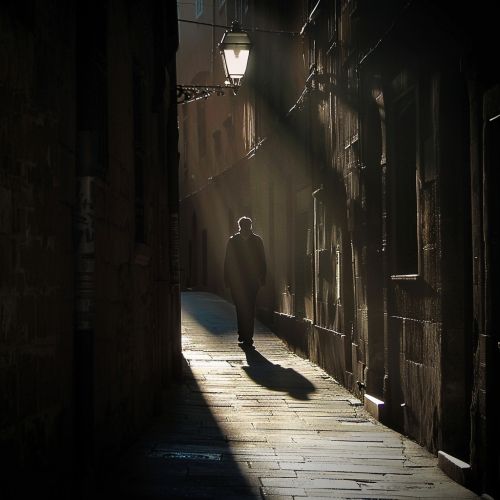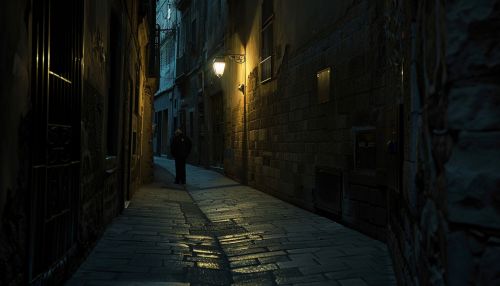Film Noir
Origins and Definition
Film noir is a cinematic term used primarily to describe stylish Hollywood crime dramas, particularly those that emphasize cynical attitudes and sexual motivations. The term, French for "black film" or "dark film," was first applied to Hollywood films by French critic Nino Frank in 1946, but it was unrecognized by most American film industry professionals of that era. Film noir of this era is associated with a low-key, black-and-white visual style that has roots in German Expressionism cinematography. Many of the prototypical stories and much of the attitude of classic noir derive from the hardboiled school of crime fiction that emerged in the United States during the Great Depression.
Visual Style
The visual style of film noir is one of its most defining characteristics. It often employs low-key lighting, creating stark contrasts and deep shadows that contribute to a sense of unease and tension. This chiaroscuro effect is a hallmark of the genre, often achieved through the use of venetian blinds or other obstructions to create fragmented light patterns. The cinematography often features unusual angles, skewed perspectives, and a sense of visual disorientation. This visual style is deeply rooted in the German Expressionist movement, which influenced many American directors who fled Europe during the rise of the Nazi regime.


Narrative Techniques
Film noir narratives are typically complex, with convoluted plots that involve crime, moral ambiguity, and a sense of fatalism. The stories often revolve around cynical, disillusioned protagonists who are entangled in a web of deceit and betrayal. These characters are frequently anti-heroes, flawed individuals who operate on the fringes of society. The use of voice-over narration is a common technique, providing insight into the protagonist's inner thoughts and adding a layer of subjectivity to the narrative. Flashbacks are also a frequent narrative device, used to reveal crucial backstory elements and to create a non-linear storytelling structure.
Themes and Motifs
Thematically, film noir explores the darker aspects of human nature and society. Common themes include existential despair, moral ambiguity, and the corrupting influence of power and greed. The femme fatale is a recurring character archetype, representing a seductive and manipulative woman who leads the male protagonist to his downfall. This character often embodies the anxieties and fears surrounding female sexuality and independence during the mid-20th century. Other recurring motifs include the urban setting, often depicted as a labyrinthine and oppressive environment, and the use of rain and fog to enhance the mood of mystery and danger.
Historical Context
Film noir emerged during a period of significant social and political upheaval in the United States. The Great Depression, World War II, and the subsequent Cold War era created a climate of uncertainty and disillusionment that is reflected in the genre's themes and tone. The influx of European filmmakers, many of whom were influenced by the Weimar Cinema and German Expressionism, brought new stylistic and thematic elements to Hollywood. The genre reached its peak during the 1940s and 1950s, a period often referred to as the "classic" era of film noir.
Notable Films and Directors
Several films and directors are considered quintessential to the film noir genre. The Maltese Falcon (1941), directed by John Huston, is often cited as one of the first major films of the genre. Other notable films include Double Indemnity (1944) directed by Billy Wilder, Out of the Past (1947) directed by Jacques Tourneur, and Sunset Boulevard (1950) also directed by Billy Wilder. Directors such as Alfred Hitchcock, Orson Welles, and Fritz Lang made significant contributions to the genre, each bringing their unique stylistic and thematic sensibilities.
Influence and Legacy
The influence of film noir extends beyond its classic era, impacting various other genres and artistic mediums. The visual and thematic elements of film noir can be seen in neo-noir films, which emerged in the late 20th century and continue to be produced today. Films such as Chinatown (1974), Blade Runner (1982), and L.A. Confidential (1997) are modern examples that draw heavily from the noir tradition. The genre has also influenced literature, graphic novels, and television series, contributing to a lasting legacy that continues to resonate with contemporary audiences.
